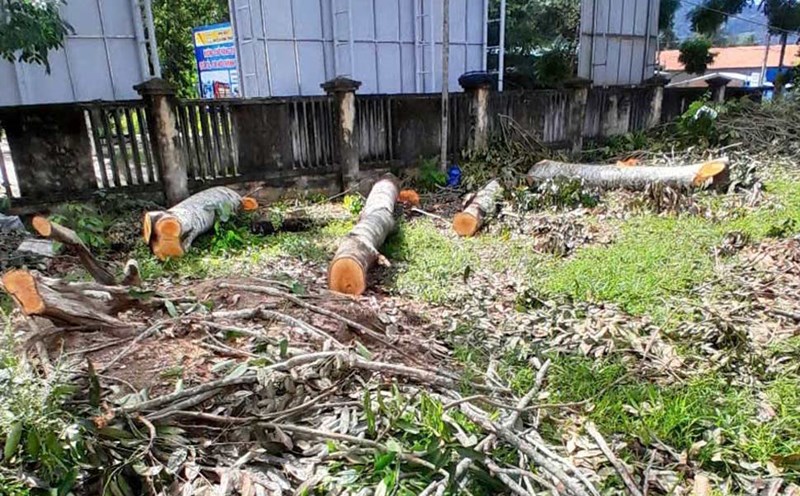Cost savings, environmental protection
Many technology and delivery drivers in Ho Chi Minh City are supporting this policy because they clearly see the benefits of using electric motorbikes, especially in terms of operating costs and environment.
Mr. Nguyen Van Hung - a technology driver shared: "I drive for more than 10 hours a day, the cost of gas is the most expensive. Every month I have to spend more than 1 million VND on gasoline, not to mention having to replace oil and maintain it continuously, each time several hundred thousand VND. Moving to electric vehicles is much cheaper, with a surplus of more than 1 million VND per month. Charging for free like VinFast cars will save even more. The price of VinFast motorbikes is also easy to buy, so I will probably change them soon.
Similarly, Ms. Tran Thi Lan - an inner-city delivery driver in Ho Chi Minh City - said: "Eletric vehicles are very suitable for delivery people like me. No need to change oil regularly, and no need to cause noise in residential areas. I support the conversion because it helps reduce air pollution in big cities like Ho Chi Minh City. Surely many people will convert because traveling is very economical".
Clear roadmap, priority groups
According to the Ho Chi Minh City Institute for Development Studies (HIDS), the project to convert 400,000 gasoline motorbikes to electric vehicles is being finalized, focusing on the group of technology drivers and delivery vehicles - those with high travel frequency (80-200km/day), higher than average emissions and well organized through digital platforms. This is also a group that is easy to access financial and technology support policies.
Mr. Tran Thanh Binh - Deputy Director of HIDS - emphasized: In the context of increasingly serious air pollution and climate change, switching from fossil fuel vehicles to electric vehicles is an urgent requirement, especially in large cities like Ho Chi Minh City. The city needs to take the lead and start from the group with the ability to spread strongly in the community".
The project roadmap is divided into stages. Of the total 400,000 motorbikes that need to be converted, the goal is to replace 320,000 by 2026, striving to achieve 80% of the conversion rate within 2 years. By 2028, all motorbikes of technology drivers and delivery staff in the area will use electric vehicles.
This conversion is expected to help Ho Chi Minh City reduce 315 tons of CO2 and 2,000 tons of fine dust per year. The research group also proposed establishing a Green Transformation Credit Fund and taking advantage of revenue from carbon credits (about 87,500 tons of CO2/year) to invest again in green infrastructure and support people.
Synchronizing the ecosystem - infrastructure and finance is the key
At the recent scientific workshop "2,-wheel electric vehicle conversion ecosystem in Ho Chi Minh City" organized by the Ho Chi Minh City Institute for Development Studies, representatives of many businesses and organizations said that to successfully complete the project, close coordination is needed between the parties in the electric vehicle ecosystem: Drivers, manufacturing enterprises, charging infrastructure, technology platforms, state agencies and financial institutions.
Ms. Nguyen Ngoc Thuy Linh - representative of Vingroup (the operator of the SM Green platform) commented: "The development of charging stations needs to be integrated right from the urban planning stage. When approving the new planning, residential areas need to arrange locations for charging stations. For pioneering enterprises, the city can exempt and reduce land tax to create motivation". Ms. Linh also proposed to establish a green conversion fund to support drivers to convert vehicles, combined with communication campaigns to raise public awareness.
Mr. Le Trung Tinh - Chairman of the Ho Chi Minh City Passenger Automobile Transport Association - said that Ho Chi Minh City is a "super-city" with a large amount of emissions, mainly from traffic activities. Therefore, the city's proactive conversion of vehicles for technology drivers and delivery vehicles - forces with high travel frequency - is the right step to reduce air pollution.
According to Mr. Tinh, in addition to the group of technology drivers, the city also needs to pay attention to the freelance driver force - those who do not work on digital platforms. This is a large group and needs to use vehicles regularly, so there needs to be separate support policies, such as a program to buy back old motorbikes or support to replace electric vehicles with the participation of the State and businesses.










